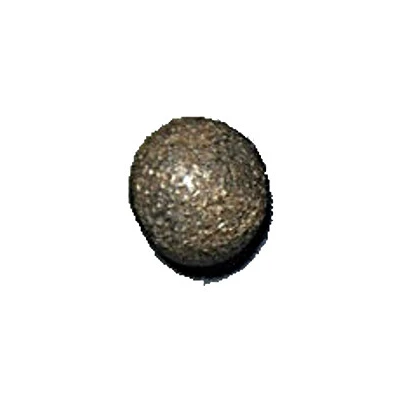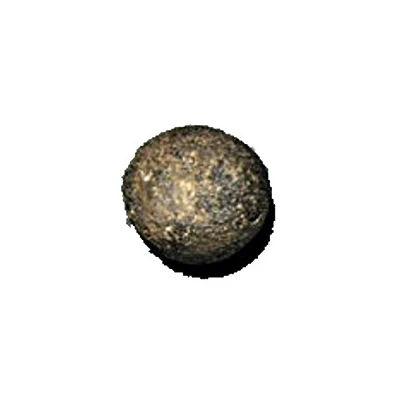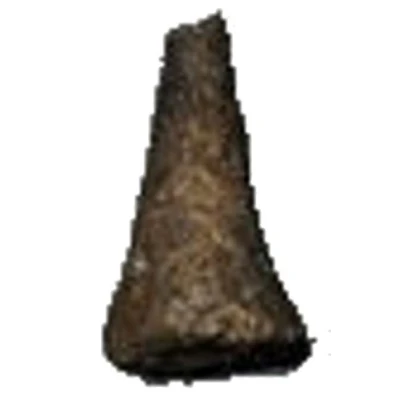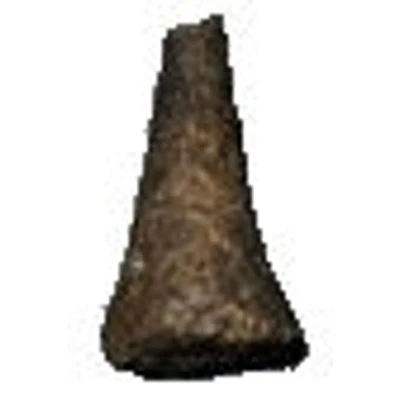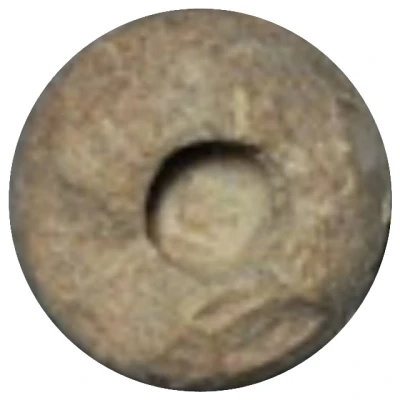
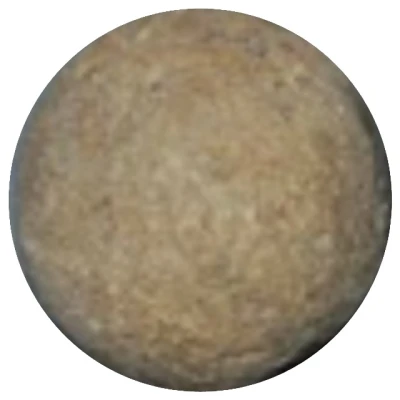

© simoneo80
Clay Token - Elam's and Mesopotamia heartlands Sumerian counting system: type I numeral 36000 ND 4000 BC - 3100 BC
| Clay composite | - | - |
| Type | Utility items › Counter tokens |
|---|---|
| Years | 4000 BC - 3100 BC |
| Value | 1 Talent (6000 Drachmae) = 60 Mina = 3600 Shekel |
| Composition | Clay composite |
| Size | 26 mm |
| Shape | Other (Sphere) |
| Demonetized | Yes |
| Updated | 2024-11-14 |
| Numista | N#71507 |
|---|---|
| Rarity index | 95% |
Comment
Clay Tokens:Clay tokens (chalkus) came in different shapes and sizes. These represented different objects. For example, a cone shape could have represented a bag of wheat. These tokens were placed inside clay balls that were sealed. If you were sending five goats to someone, then you would put five tokens in the clay ball. When the goat arrived, the person would open the clay ball and count the tokens to make sure the correct number of goats had arrived.
The number of tokens began to be pressed on the outside of the clay balls.
Progenitor of the current Monetary Agreements and the various conventional scales of weights and measures.
In the area of Mesopotamia, the Sumerian and Elamite, made use of such objects to satisfy their needs and their intense economic activity of the fourth millennium BC
Plain tokens from Susa, Iran, late fourth millennium B.C.
Complex tokens from Susa, Iran, late fourth millennium B.C.
Envelope with its content of five spheres from Susa, Iran, late fourth millennium B.C.
Babylonian Talent: A talent (6000 drachmae) is an ancient unit of mass. The Sumerians and the Babylonians had a system where 60 shekels (weight ranging from 10 to 13 grams) formed a mine and 60 mines formed a Babylonian talent, so that was at least 36 kg.
Elam: http://en.wikipedia.org/wiki/Elam
Links: https://www.educreations.com/lesson/view/empires-of-mesopotamia/1325880/
http://archaeology.about.com/od/mesopotamiaarchaeology/fl/Clay-Tokens-The-Neolithic-Seeds-of-Mesopotamian-Writing.htm
